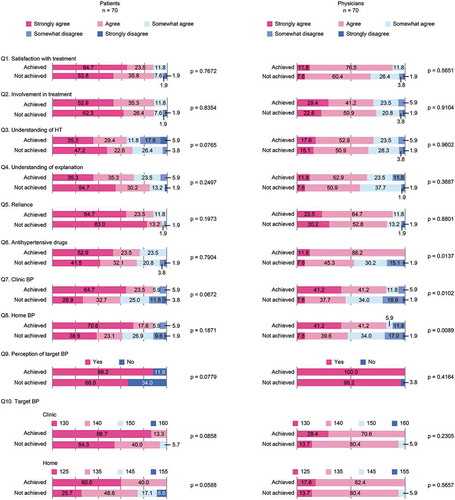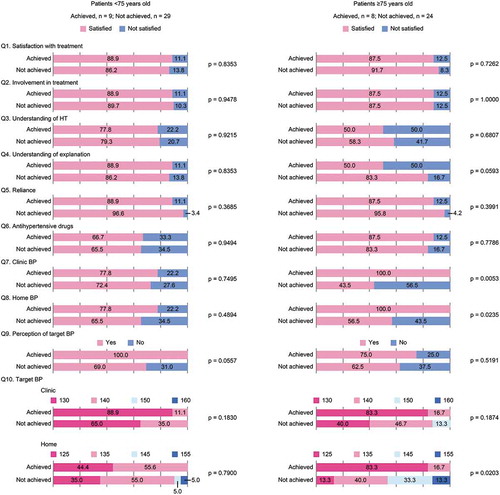Figures & data
Table 1. Survey questions.
Figure 1. Distribution of home early morning SBP and clinic SBP at baseline and week 12 of treatment. A) SBP values at baseline in patients <75 years old; B) SBP values at week 12 in patients <75 years old; C) SBP values at baseline in patients ≥75 years old; D) SBP values at week 12 in patients ≥75 years old. Dotted lines represent final BP targets, defined as <135 mmHg for home early morning SBP and <140 mmHg for clinic SBP. Percent values represent the proportion of patients with SBP values above or below these targets. SBP, systolic blood pressure.

Figure 2. Achievement of target blood pressures and satisfaction survey results. Patients who answered “strongly agree” or “agree” were considered to be satisfied with treatment. Patients who answered “somewhat agree”, “somewhat disagree” or “strongly disagree” were considered to be dissatisfied with treatment.

Figure 3. Patient satisfaction survey results stratified by target blood pressure achievement and patient age. Patients who answered “strongly agree” or “agree” were considered to be satisfied with treatment. Patients who answered “somewhat agree”, “somewhat disagree” or “strongly disagree” were considered to be dissatisfied with treatment.

Supplemental Material
Download Zip (143.7 KB)Data availability statement
We have no plan to share data that supports the results or analyses presented in this paper.
